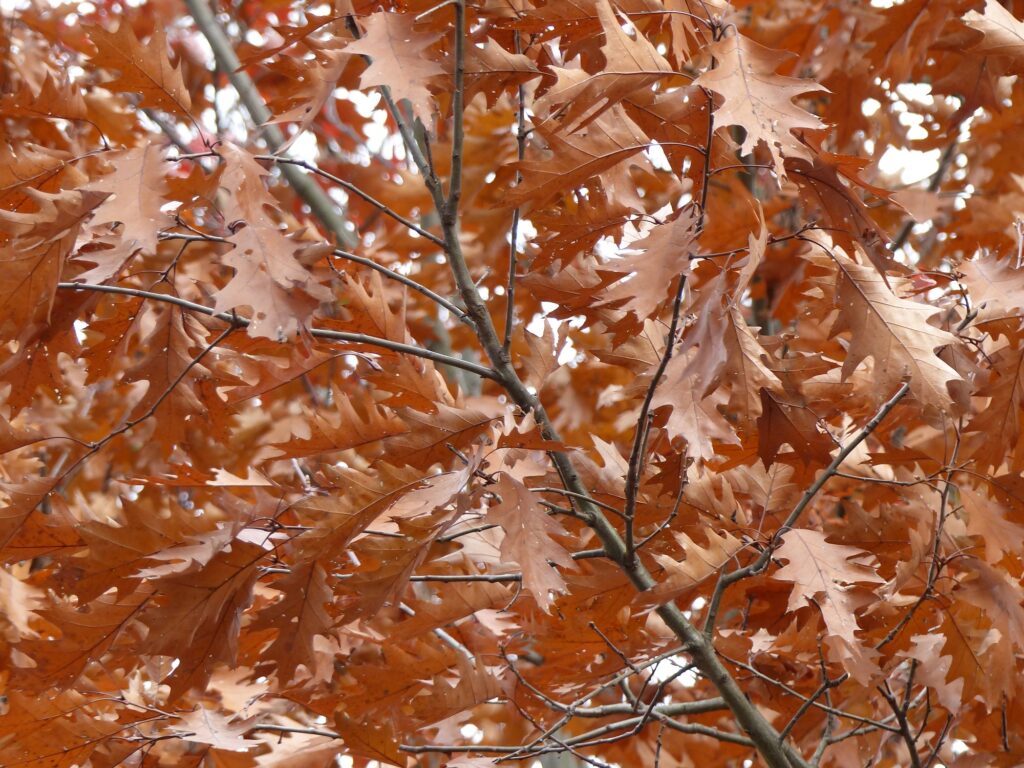 This time of year, my garden and lawn are carpeted with leaves—not the orange and gold of autumn, but the dry, brown leaves of oaks. A damp brown rug. The fallen oak leaves will be there for a quite a while—they’re a lot more durable than most leaves. They form a dense mat, moist and solid, almost as tough as leather.
This time of year, my garden and lawn are carpeted with leaves—not the orange and gold of autumn, but the dry, brown leaves of oaks. A damp brown rug. The fallen oak leaves will be there for a quite a while—they’re a lot more durable than most leaves. They form a dense mat, moist and solid, almost as tough as leather.
Pausing in the raking, I observe that every single oak leaf has holes in it. Big holes, little holes, pinpricks—all sorts of patterns of holes: the chewings and nibblings and gnawings of a multitude of insects.
They’re interesting patterns to look at, forming a sort of topographical map of insect feeding habits. Some of the bugs take bites from the outside rim and chew their way in. Others eat a round hole in the middle of the leaf, neat as if cut with scissors. Some tiny insects, called leaf miners, tunnel through the inner layers of the leaf, eating as they go. Tiny insects with the creepy name of “leaf skeletonizers” eat only the softest tissue between the oak’s sturdy veins, leaving a network of “bones.”
Much as I love oak trees, I’m not sad to see all these chewings. A huge infestation of insects would be a disaster, but healthy oaks can withstand a certain amount of insect nibbling. An oak can potentially be food for hundreds of species of insects, thereby making it an arboreal restaurant for bugs. And for bug-eating birds.
This is an intriguing fact to consider, especially when you’re shopping for a species of tree to plant in your back yard. A non-native species like Norway maple, Siberian elm or Chinese gingko isn’t food for our local insects, and so will have leaves nice and neat, with fewer holes—but the bugs and therefore the birds go hungry.
It requires a revolutionary gardener to welcome munching caterpillars, leaf miners, and beetles into the garden and the forest. It’s hard to turn your head and look away from holes in the very leaves you’ve so carefully nurtured. But that’s the way nature works. Want to see butterflies? You must welcome caterpillars. Want to see warblers? Allow the insects they feed on to share your turf.
Oaks, perhaps more than any other trees, provide a huge amount of nutrition to the ecosystem of the forest, or the back yard. Not just the acorns, which are high-quality nutrition for dozens of species of wildlife. Every oak leaf is a potential feast for the insects of summer and fall, and so oak leaves offer the promise of a feast for the birds of spring.





Food for thought! 😅 Seriously, I learn new things every time I read one of Anita’s posts!